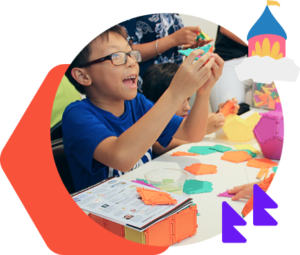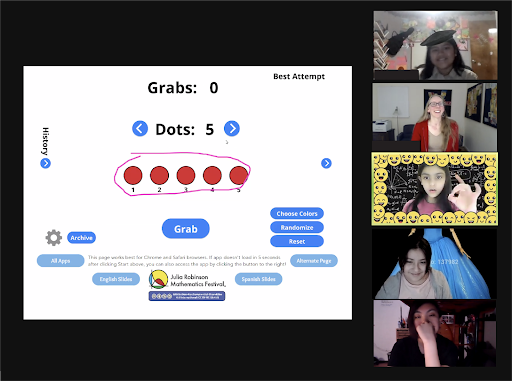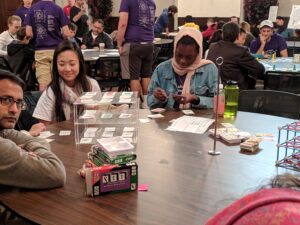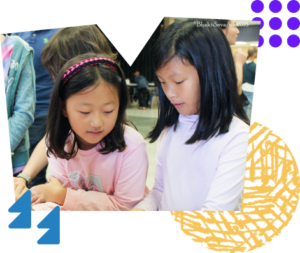An event where participants gather and explore math through puzzles and games.
- Math anxiety is real: Up to 93% of Americans experience math anxiety — and kids with a fear of math perform worse at the subject.
- Inequalities persist: Girls and students of color enter STEM and tech careers at a drastically lower rate.
- Math isn’t fun: School curricula focus on memorization and formulas, not problem-solving and collaboration.
- STEM shortages continue: The U.S. will be short 1.1 million STEM workers by 2024.
- Math is a solo sport: Math is often seen as an individual activity, one where you succeed and fail on your own.
What was done: 
- Build confidence: Open-ended activities allow kids to succeed early and build up to more challenges.
- Promote inclusion: Girls and students of color get more out of math when they can express ideas, grapple with concepts and freely question tasks.
- Inspire joy: Happiness is positively associated with a person’s personal drive to learn, and even with a student’s GPA.
- Encourage play: Students often lack the skills needed for STEM careers. Play helps teach them the foundations.
- Create community: Learning math is social, not individual. Working together allows teams to solve problems and develop soft skills.
Link to JRMF | JRMF and Key Club


